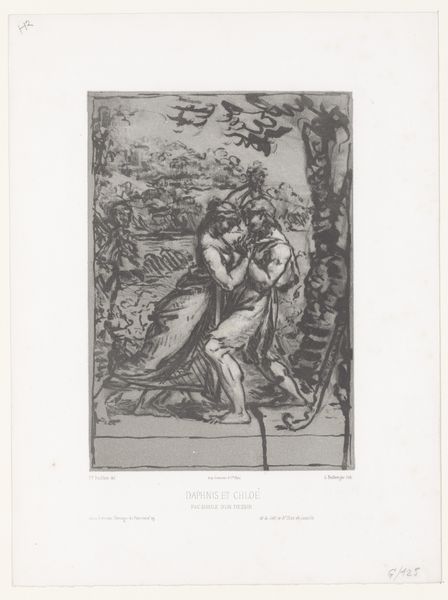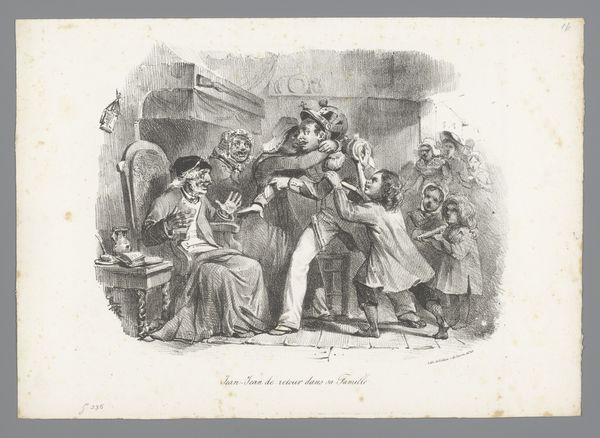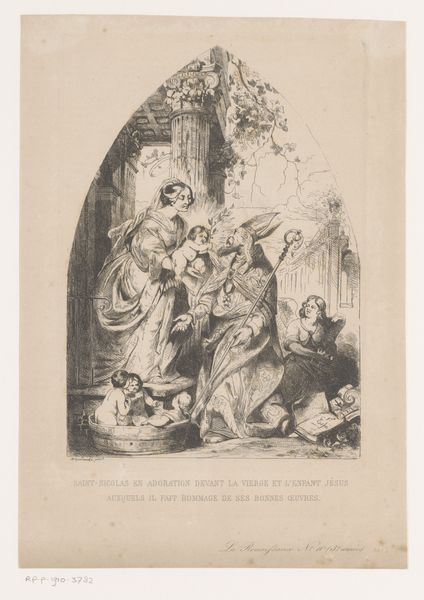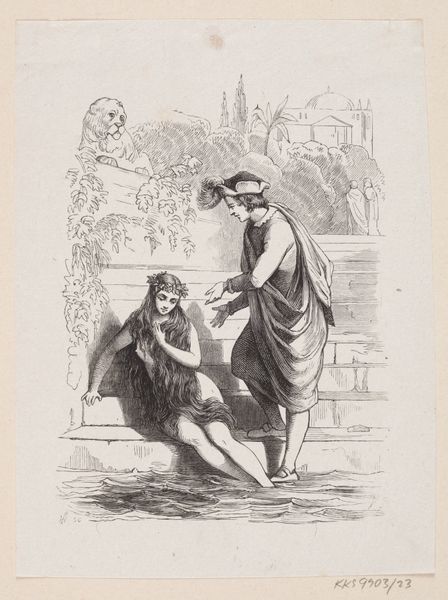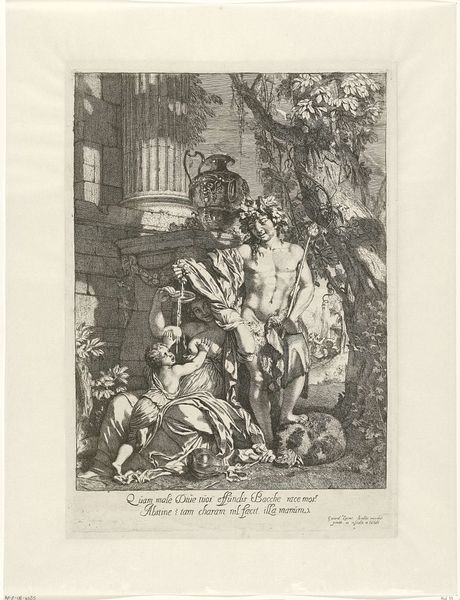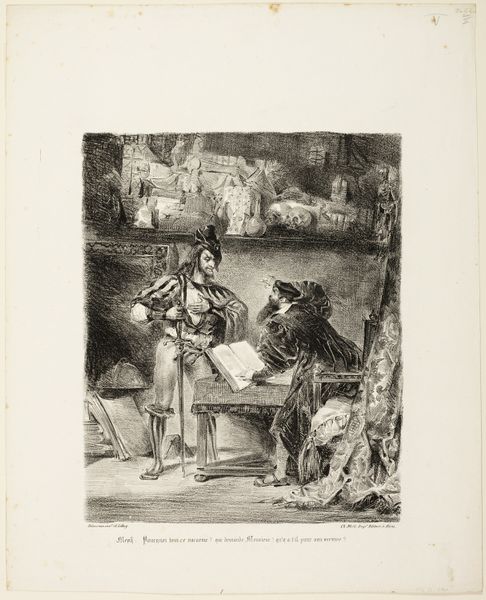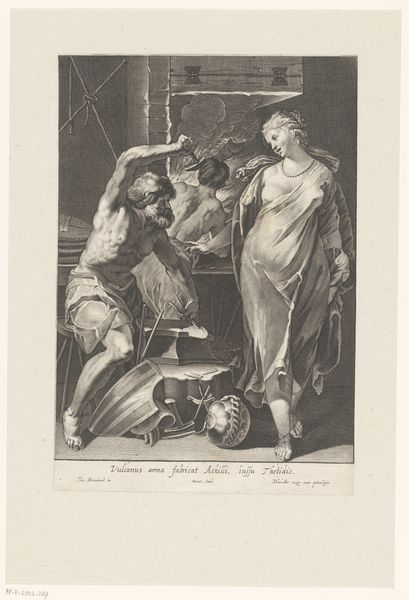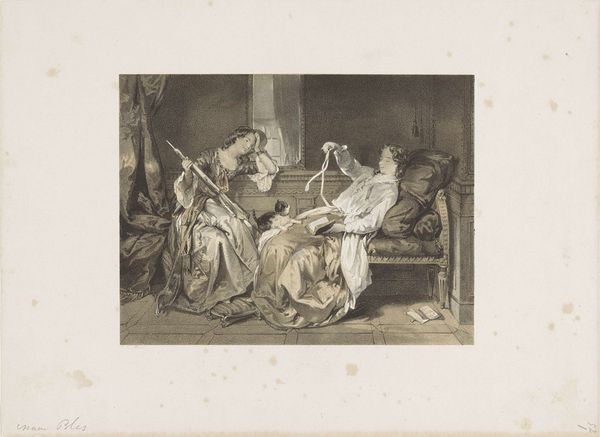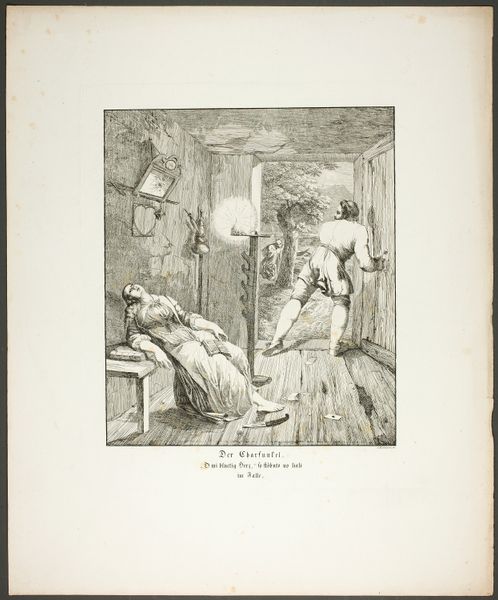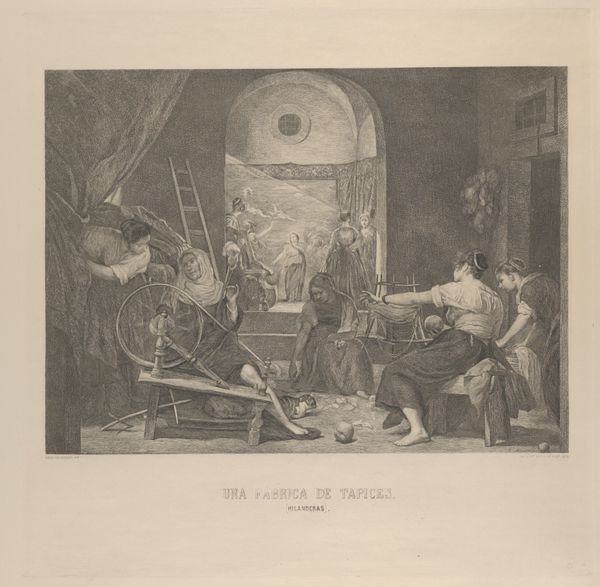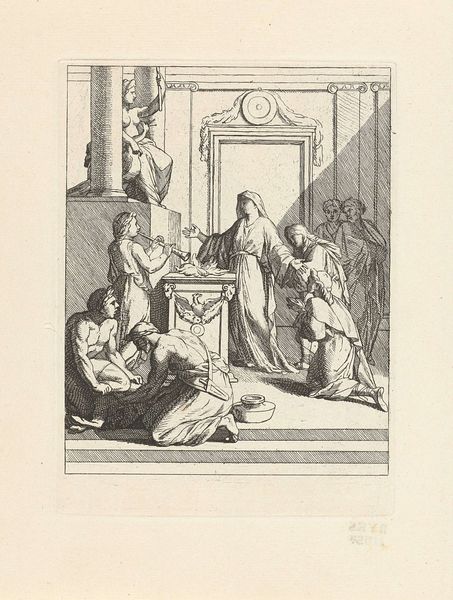
drawing, lithograph, print, paper
#
drawing
#
narrative-art
#
lithograph
# print
#
figuration
#
paper
#
romanticism
#
france
#
history-painting
Dimensions: 254 × 219 mm (image); 426 × 285 mm (sheet)
Copyright: Public Domain
This is Eugène Delacroix's etching, "Faust in Marguerite's Prison Cell," part of his illustrations for Goethe's "Faust". The print uses stark contrasts of light and shadow to amplify the scene’s drama. Delacroix’s cross-hatching technique creates a palpable sense of confinement. The composition divides the space into distinct zones—the dark, cavernous entrance where Mephistopheles lurks and the more open, yet still oppressive, cell where Faust reaches for Marguerite. The figures are rendered with an expressive intensity; their gestures and expressions convey a powerful emotional charge. The starkness of the setting, combined with the raw emotional display, reflects the Romantic movement’s fascination with intense psychological states. Delacroix uses the visual language of Romanticism to explore themes of guilt, redemption, and the supernatural, inviting us to consider the structures that confine both body and spirit. Note how the artist employs a semiotic system of light and shadow to underscore the thematic tensions within the narrative.
Comments
No comments
Be the first to comment and join the conversation on the ultimate creative platform.

